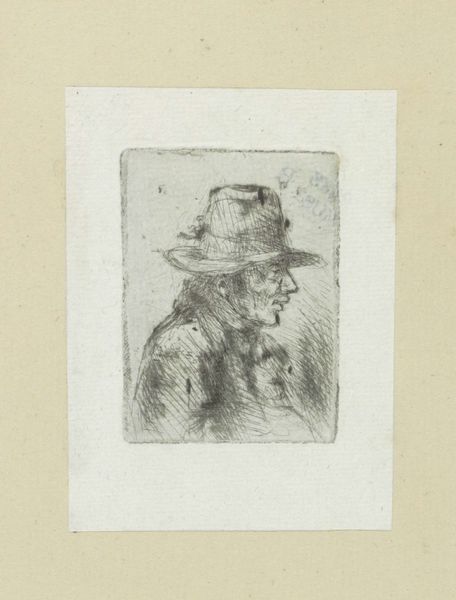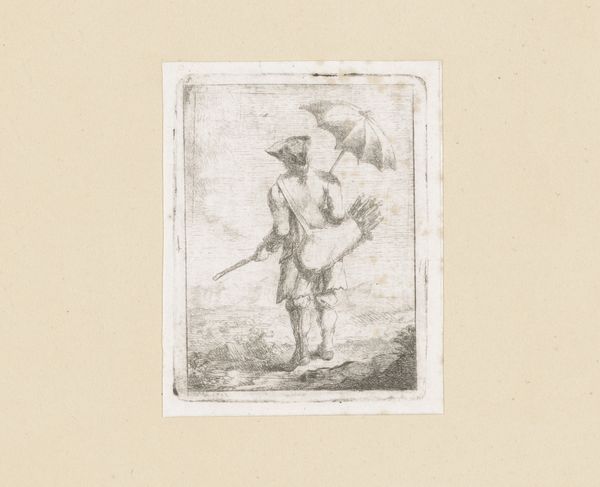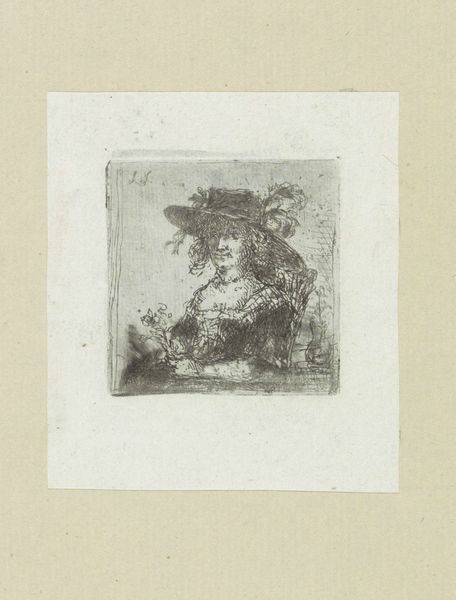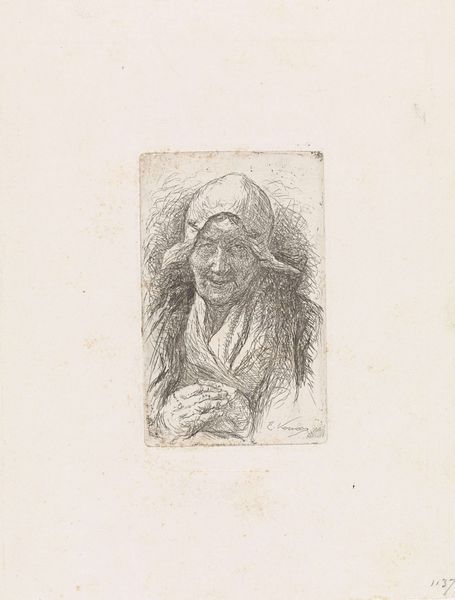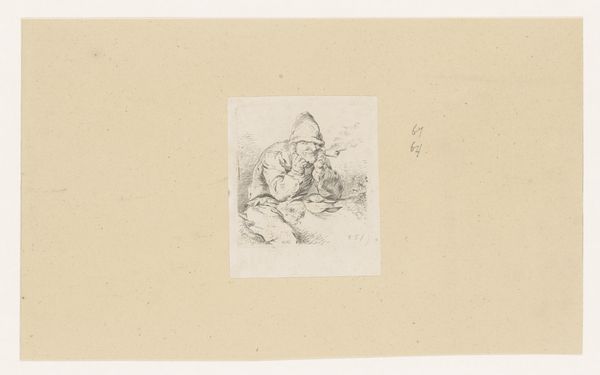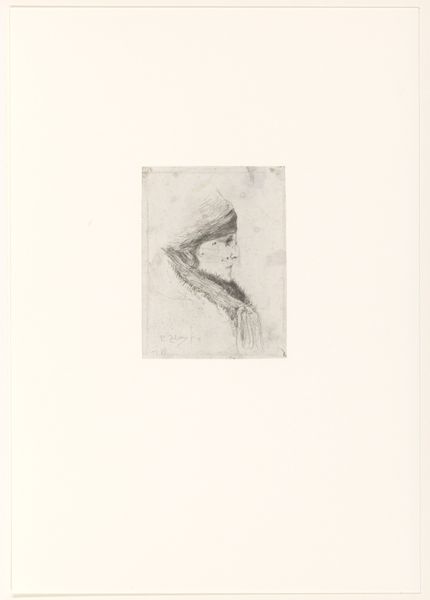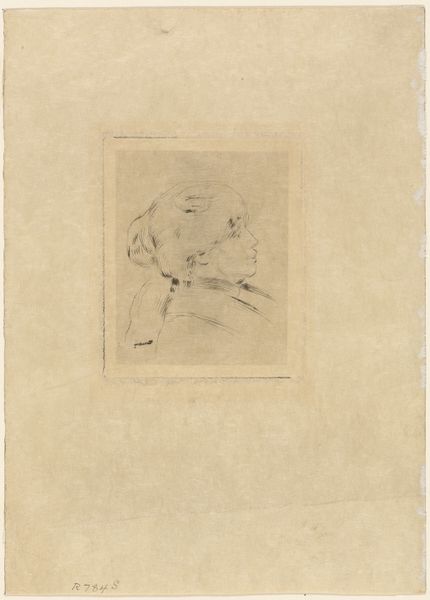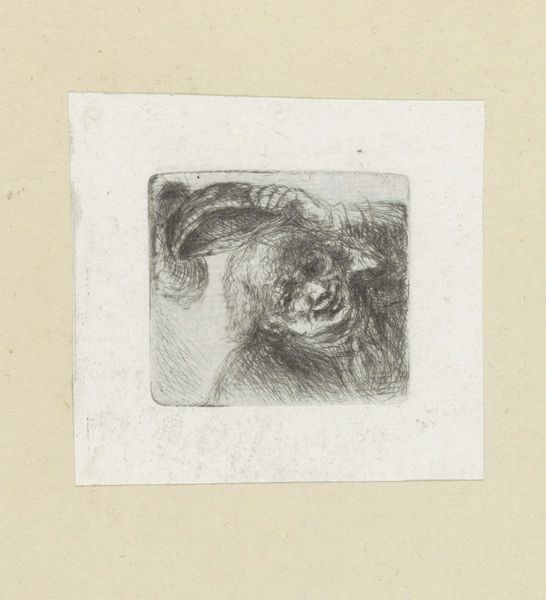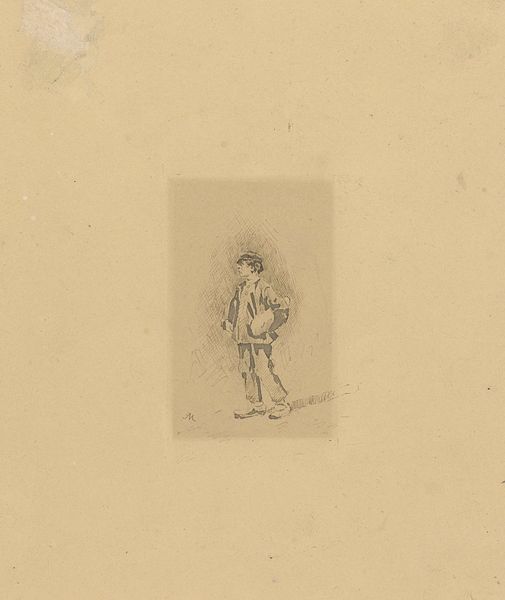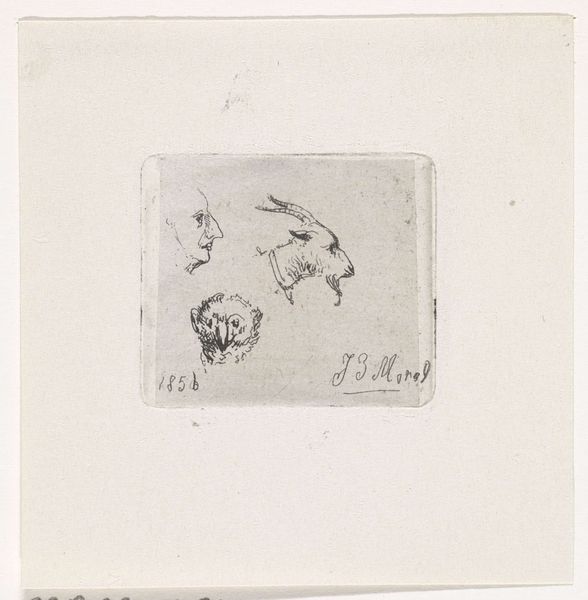
print, etching
#
portrait
# print
#
etching
#
etching
#
figuration
#
line
#
realism
Dimensions: height 36 mm, width 29 mm
Copyright: Rijks Museum: Open Domain
Curator: This etching is titled "Kop van een onbekende man," or "Head of an Unknown Man," and it's attributed to Johann Friedrich Morgenstern, dating from between 1787 and 1844. Editor: Immediately, the word that springs to mind is 'wistful.' The delicate, scratchy lines give him such a fragile presence. He seems weary, perhaps carrying the weight of the world under that curious hat. Curator: Yes, that cap certainly marks him, doesn't it? In portraits of this era, attire signaled a lot about social standing and profession. The relatively simple clothes indicate a working-class person. Also, given that the original is a print, its existence implies circulation amongst a broader public. Editor: Exactly! This isn't some grand oil painting commissioned by nobility; it feels far more democratic, far more accessible. He's almost like someone you’d pass on the street—someone easily overlooked, yet brimming with a story, or a whole series of untold tales. Curator: The style echoes the increasing focus on realism present within late 18th- and early 19th-century print culture. His unidealized features demonstrate an embrace of representing everyday people rather than heroic figures. Editor: There’s beauty in the everyday, right? His slight frown, the tired eyes, the unruly hair poking out from beneath the brim… it's less about perfection, more about authenticity. He is far from traditionally beautiful. You just want to reach out and listen to his story. Perhaps buy him a drink. Curator: I think your immediate reaction captures that desire for a personal connection fostered by these portraits aimed at wider audiences, rather than exclusive elite patrons. This aesthetic shift broadened notions of who was worthy of portraiture and memorialization. Editor: Well, in the end, isn’t that what art should be about? Creating a connection, sparking a dialogue, making the overlooked visible. To tell you the truth, he's more compelling to me precisely because of his plainness, his quiet suffering, that feeling you have just to offer a bit of support. Curator: Absolutely. By displaying works like this, the museum plays a role in honoring diverse histories and experiences, providing an important perspective on individual lives during Morgenstern's time.
Comments
No comments
Be the first to comment and join the conversation on the ultimate creative platform.
